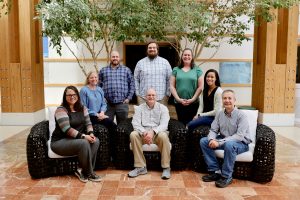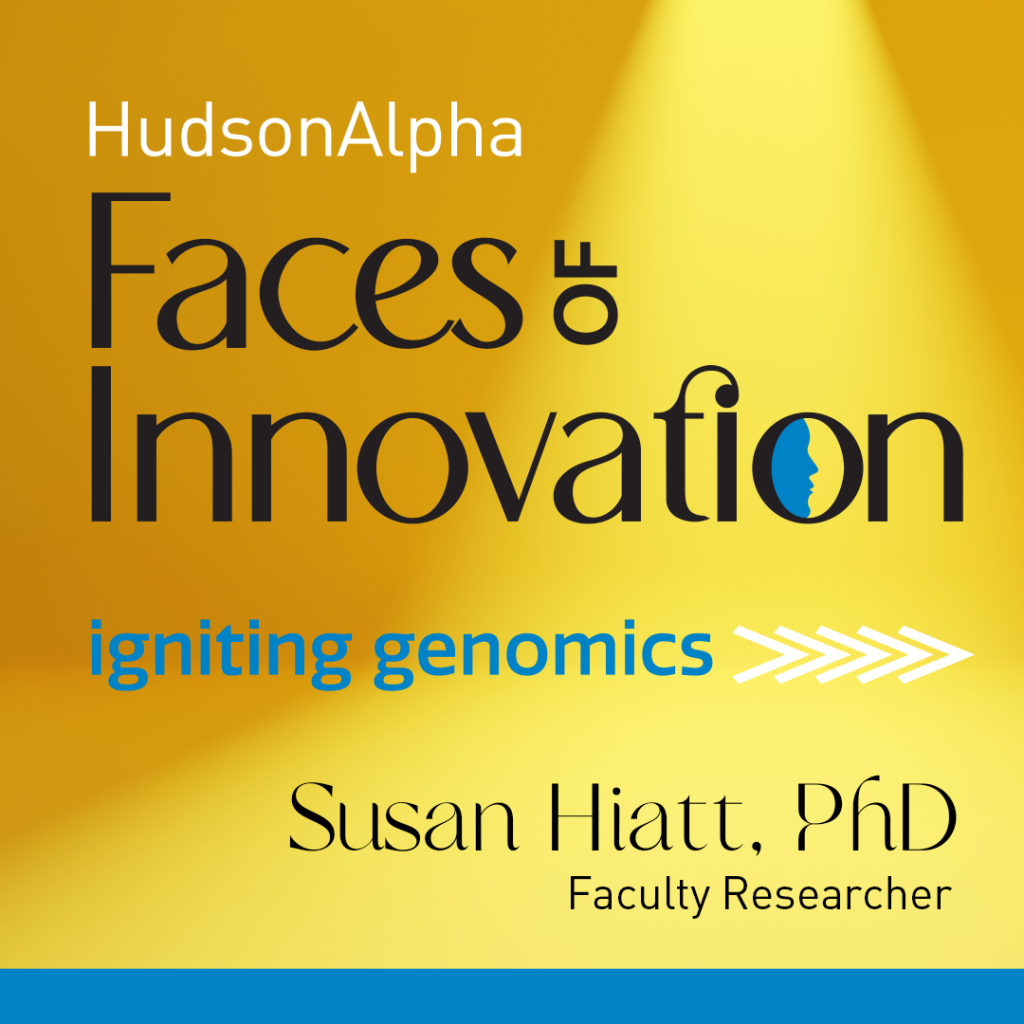By: Sarah Sharman, PhD, Science writer
Many of us probably take the internet for granted, having been exposed to its wonders for several decades now. Today, you can find anything on the internet. An outfit for an upcoming wedding, the best brand of paper towels, and even a life partner. Internet dating takes on the role of a matchmaker by virtually connecting people with similar interests. Turns out, a similar type of matchmaking service is helping researchers gain more clues into rare genetic disorders.
Researchers at the HudsonAlpha Institute for Biotechnology recently published a paper in the American Journal of Human Genetics associating genetic variation in a gene called ZMYM3 with neurodevelopmental disorders. The kicker? They began with one case in Alabama and assembled a cohort of 27 individuals from around the globe using a relatively simple social networking tool and the power of collaborative research.
A four-year international search

Greg Cooper (seated center) and his lab. L to R- Stephanie Felker, Michelle Thompson, James Lawlor, Zach Bonnstetter, Susan Hiatt, Candice Finnila, and Don Latner.
HudsonAlpha faculty investigator Greg Cooper, PhD, and his lab are experts at identifying and characterizing genes involved in rare developmental disorders. Over the past decade, Cooper’s lab, along with many collaborating labs, sequenced the genomes of more than 1,790 children with rare diseases, affording diagnoses to about 27 percent of patients. The roughly 70 percent of patients without a diagnosis could be explained, in part, because many neurodevelopmental disease-associated genes have yet to be identified.
“A major goal of my lab is to use genomic sequencing technology, computational tools, and good old-fashioned collaboration to identify new neurodevelopmental disease-associated genes that will help eliminate lengthy diagnostic processes for patients with neurodevelopmental diseases,” says Cooper.
In 2018, researchers in Cooper’s lab identified a genetic variant in a patient with neurodevelopmental symptoms that piqued their interest. A search of the scientific literature returned a study that also identified a variant in the same gene, ZMYM3. Interestingly, the patients displayed similar clinical features, including developmental delay, intellectual disability, and facial abnormalities. However, because the variant was not at the same position within the gene, and the cohort was still very small, the researchers could not compare the cases with certainty.
Senior Scientist Susan Hiatt, PhD, was interested enough in the gene to submit it to the genetic matchmaking service, GeneMatcher. Over the next four years, Hiatt received emails from at least 30 researchers who found variants in the same gene in patients with similar clinical characteristics.
“What began as one patient from Alabama slowly grew into a cohort of several dozen patients from across the globe,” says Hiatt. “It was not always a linear increase, though. The cohort went through many periods of growth and waning as we received a few cases through GeneMatcher that seemed like they fit our story, only to learn later that they were likely benign variants.”
At the time of publication, Hiatt and the team assembled a cohort of 27 individuals, harboring 22 unique variants in ZMYM3. Most of the individuals are males who inherited the variant from their mothers. Six individuals, however, harbor de novo variants in ZMYM3, strengthening the case for support of ZMYM3 as a neurodevelopmental disease-associated gene.
Collaborating to strengthen the story
The collaboration did not stop with the GeneMatcher connections. To determine the functional implications of the identified ZMYM3 variants, Cooper’s team tapped collaborators both near and far. ZMYM3 lies on the X chromosome and encodes for a protein that is part of a complex that regulates gene expression by binding to specific areas throughout the genome. Researchers at the University of Turin in Italy investigated how each of the 21 missense variants affected ZMYM3 protein folding. Several of the variants affect protein structure and protein interactions, both of which are key in the biological function of ZMYM3.
A group of colleagues in Rick Myers’ lab at HudsonAlpha helped Hiatt and her team with functional studies. Chris Partridge, PhD, a senior scientist in the Myers lab, performed sophisticated ChIP-seq experiments to see how the variants affected ZMYM3’s ability to bind DNA. One variant causes partial loss of ZMYM3 function, lowering the ability of ZMYM3 protein to bind DNA and affect gene expression. Although the researchers could only look at a few variants using this technology, the experiment provides a framework for testing other ZMYM3 mutations in future studies, as well as mutations in other DNA-binding regulatory proteins.
“This project truly exemplifies the collaborative nature at the heart of what we do here at HudsonAlpha,” says Partridge. “Combining the Cooper lab’s expertise in genomic analysis and variant calling with our foundational research acumen led to a well-rounded analysis of a diagnostically important family of gene variants.”
Four years of hard work, hundreds of emails, and many advanced genome analyses and functional experiments took an interesting finding in one patient and built it into a study supportive of a new neurodevelopmental disease-associated gene.
“Although there is still additional work to be done to confirm the pathogenicity of each ZMYM3 variant we presented in the paper, we believe our study moves the field of diagnostic genomics forward by presenting several case studies that might help geneticists diagnose more of their patients who are waiting for an answer,” says Hiatt.
Media Contact:
Adam Kelley, Director of Communications
256-508-7199
akelley@hudsonalpha.org


